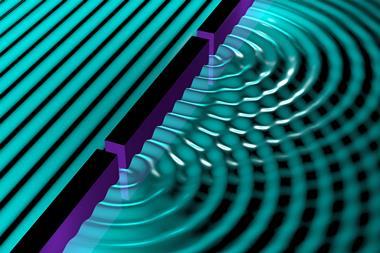Researchers have repeated the double slit experiment at the heart of quantum mechanics with the largest molecules ever used
Richard Feynman, one of the 20th century’s greatest physicists, once said the double-slit experiment went to ‘the heart of quantum mechanics’. Now, an international team of scientists has refined the famous experiment, allowing the untrained observer to watch it unfold in real time.
Send electrons at a wall with two slits, and on the other side they amass in an array of peaks and troughs, as though they are interfering with one another. This might suggest electrons behave collectively as waves. However, even if the electrons are fired one at a time, the interference pattern builds up, almost as though each electron is interfering with itself.
The molecules in the latest demonstration, published in Nature Nanotechnology (DOI: 10.1038/nano.2012.34) were phthalocyanine and its derivatives, which have masses about 100 times that of a carbon-12 atom. These molecules were launched by laser evaporation and travelled towards a silicon-nitride grating, which had slits cut into it at 100nm intervals. The molecules were then detected one-by-one by fluorescence microscopy, a process that could be viewed in real time on a computer. The researchers found that, as expected, an interference pattern built up, even though the molecules were arriving one at a time - the classic wave-particle duality of quantum mechanics.












No comments yet